Overseas coinage
Prior to the Second World War, the Royal Mint had produced coinage for countries around the globe. This included those that were linked to Britain by the ties of Empire but also foreign nations with whom it had no connection. During the difficulties caused by a world war it might be expected that this work would suffer but the opposite is true. Throughout the conflict the Mint struck coins for a number of countries and its ability to continue to meet these demands is a testament to the effort of Mint staff who had to work in difficult conditions.
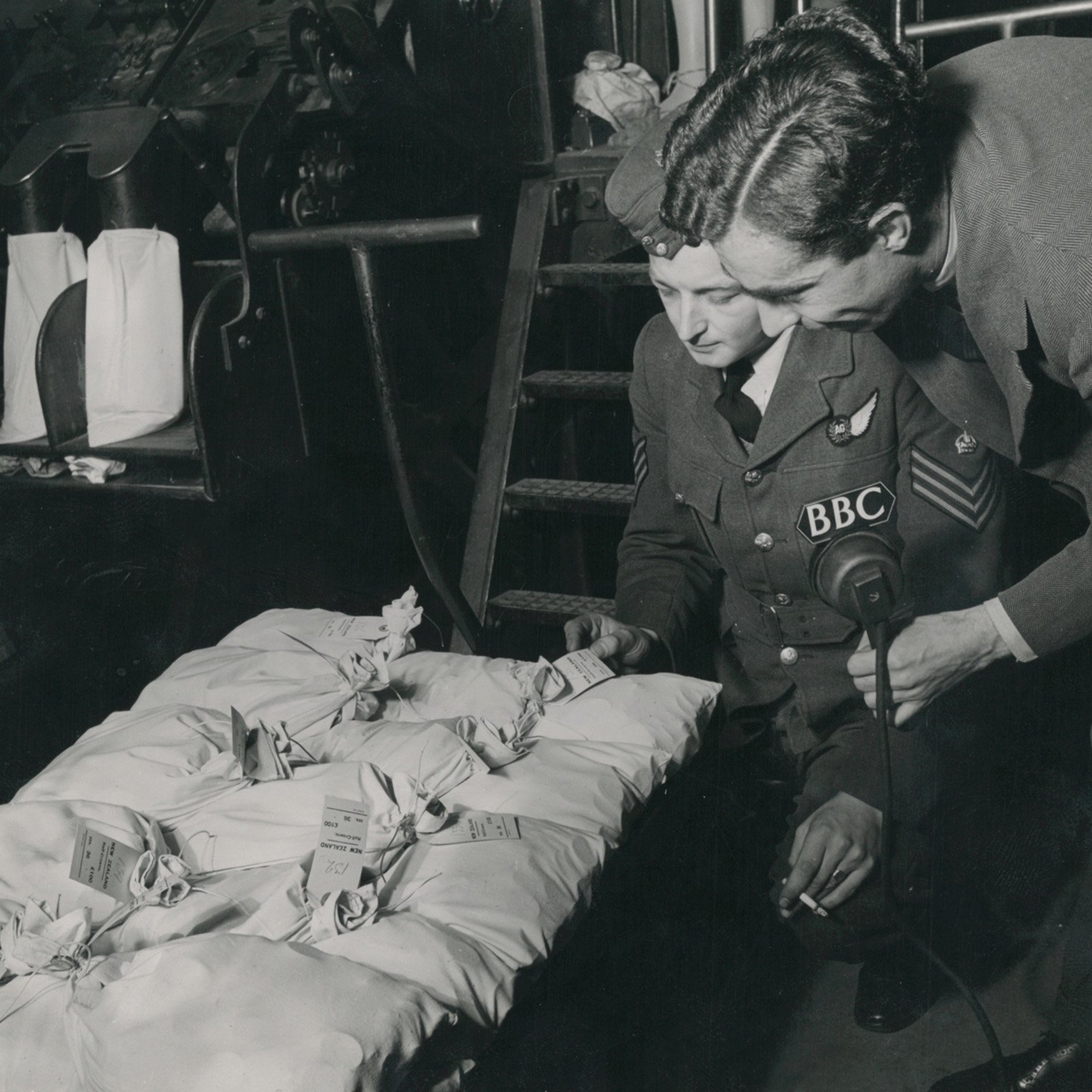
BBC reporter looking at newly struck coinage of New Zealand in the Royal Mint factory
Old, established relationships with countries were maintained throughout the war but it may be surprising that new work was also taken on by the Royal Mint. One such example is Iceland, whose coinage had hitherto been struck in Denmark. The fall of the country to the Germans in 1940 prevented the supply of further new coins and the Government of Iceland turned to the Royal Mint. Using existing coins as a model, new obverse and reverse dies were prepared. The only difference in the design was the exclusion of the initials of the Master of the Copenhagen Mint, those of the original artist and the mint mark for Copenhagen. Production began at day-break after a night of bombing during which the windows and roof had been destroyed and the Deputy Master records in the Annual Report of 1940 how a ‘glacial wind whirled round the coining presses to inaugurate this coinage of Iceland’.
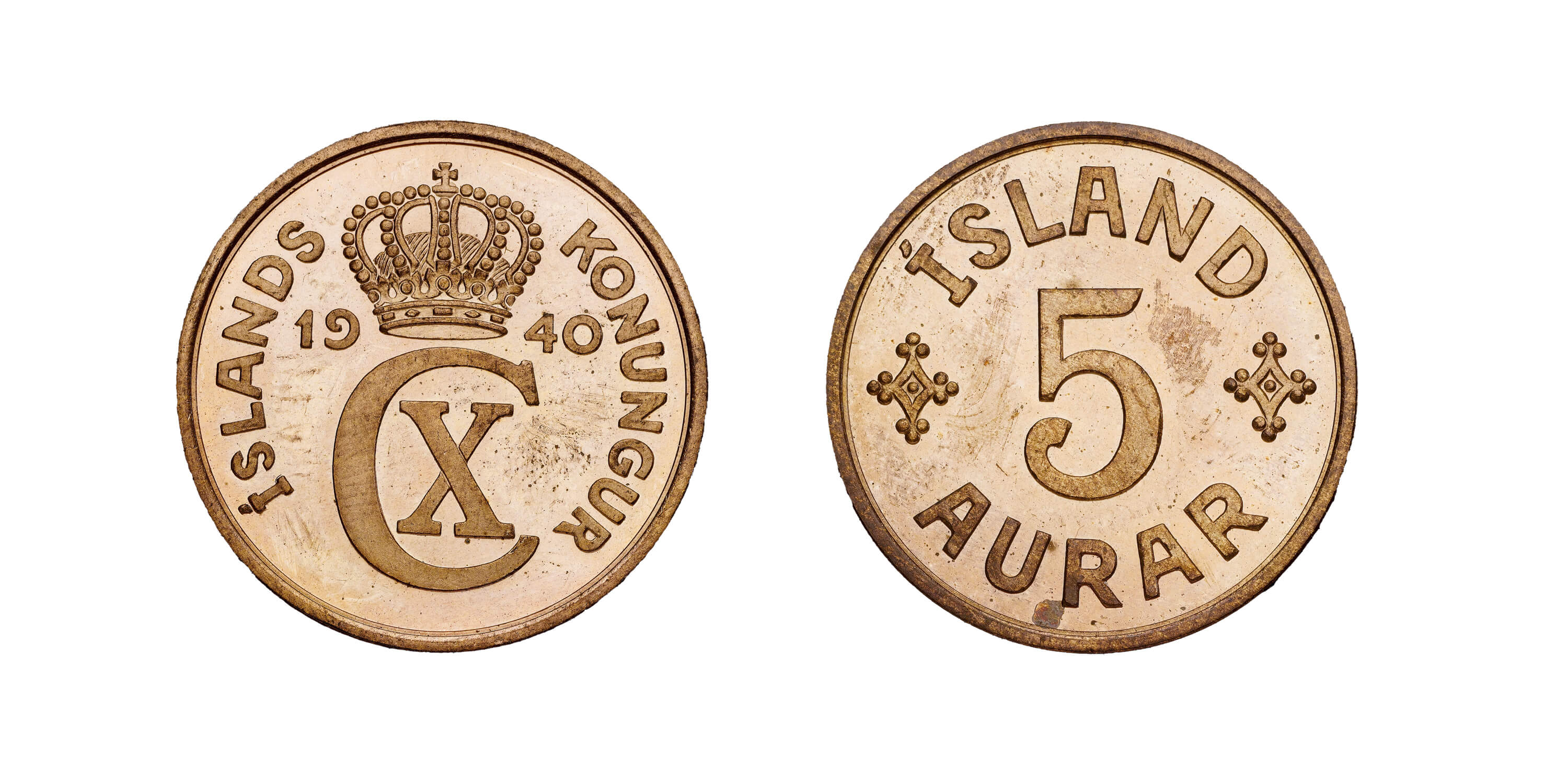
Icelandic 5 Aurar coin RMM19289
As the demand on the Royal Mint grew during the war, the pressure of work meant that it was unable to accept work from outside the Empire which ordinarily it would have taken. The Royal Mint turned for help to the Indian mints. Although part of the Empire, these mints had never been under the direct control of London but they would play a vital role during the conflict in helping to meet the demands of overseas coinage production. Provided with master tooling by the Royal Mint, they struck coinages for countries as varied as Saudi Arabia, Egypt and Iraq. In the case of Iraq, in order to distinguish between the coins made in London and those in India, a small dot was placed below the effigy to signify they were made at the Royal Mint whereas a star was used for those struck in India.
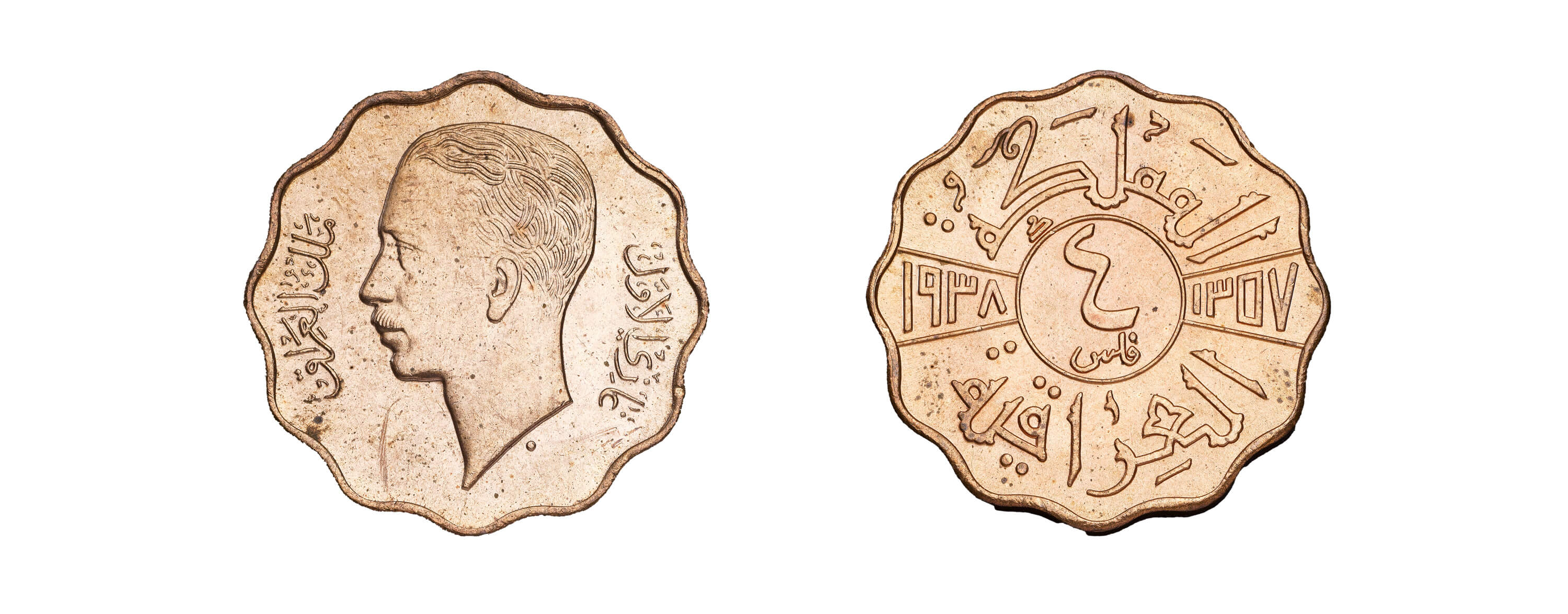
Coinage of Iraq featuring a small dot indicating that it was struck in London RMM29369
Prior to the war, bronze coins at the Royal Mint contained 3% tin but the Japanese invasion into Asia threatened the majority of the world’s tin supply. Tin in bronze was reduced to just 0.5 % and efforts were made to save on the amount of nickel used as this was needed for the manufacture of munitions. In 1942 many of the overseas coins made by the Royal Mint had their specifications changed from cupro-nickel, a mixture of copper and nickel, to bronze. In order to prevent confusion with existing bronze coins already used, the shape of some had to be changed. The Egyptian 10 and 5 milliemes and the Iraqi 10 and 4 fils were produced with scalloped edges, whilst the Canadian 5 cent was struck as 12-sided coin to avoid confusion with the 25 cent.
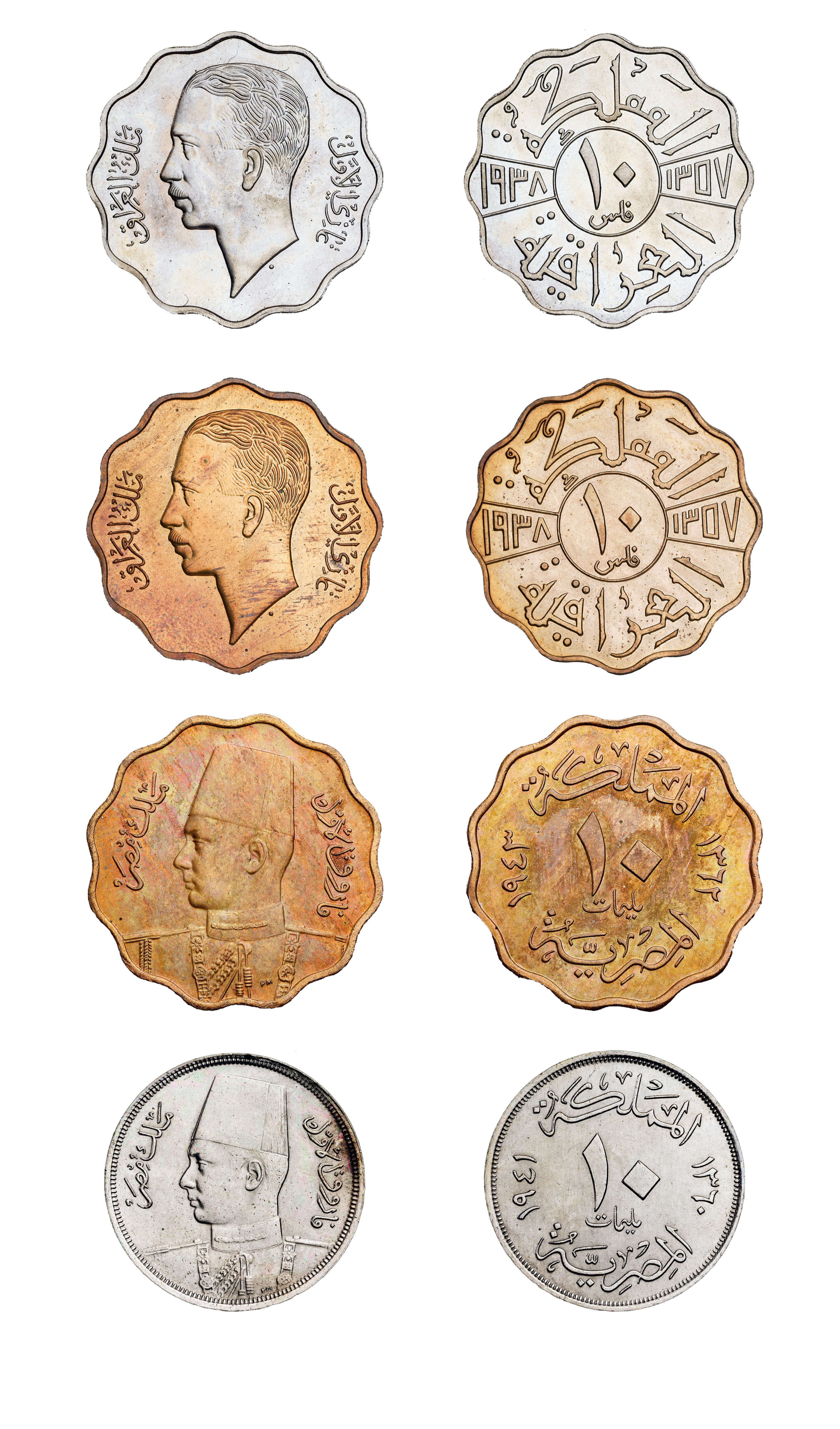
Coinage of Iraq and Egypt
The drive to save metal resulted in the Mint examining the possibility of using plastic as a coinage material. It was found unsuitable, however, as it could not withstand the needs of day-to-day use. One other consideration was that the plastic coins were too light and it was felt that it would be ‘inconvenient that a penny should fall soundlessly or be blown away by the wind’. Glass was later considered and, though it was found more durable than plastic, it was still considered to be too light.
Despite the war, the Royal Mint maintained its international presence and it exhibited at the New York World’s Fair in 1940. Five cases containing recent examples of the Royal Mint’s work were put on display at the British Pavilion. The exhibit included a complete set of George VI coinage, including Maundy money, as well as impressions in silver of the Great Seals of George V and George VI.
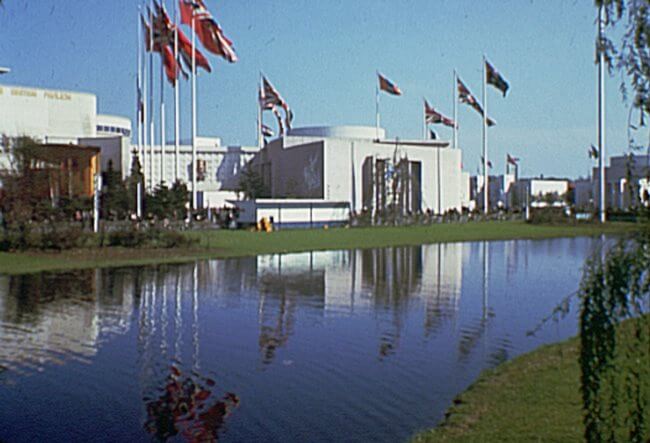
British Pavilion at the World's Fair in 1940
At the start of the war the Royal Mint had branches in Melbourne and Perth in Australia and one in Pretoria in South Africa. A munitions department was established at Pretoria in 1938 and this was expanded after the outbreak of the conflict with Germany. The number of staff employed were doubled and the .303 ammunition factory was put on double shifts. By 1941, coinage work accounted for a fraction of total output and the decision was taken to drop the link with the Royal Mint in London and the newly independent South African Mint was opened by the High Commissioner for the United Kingdom and the Union Minister of Finance on 30th June 1941.
